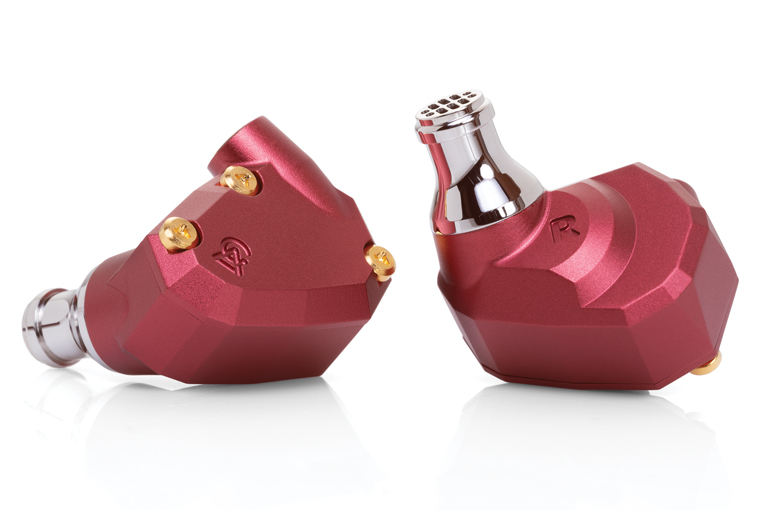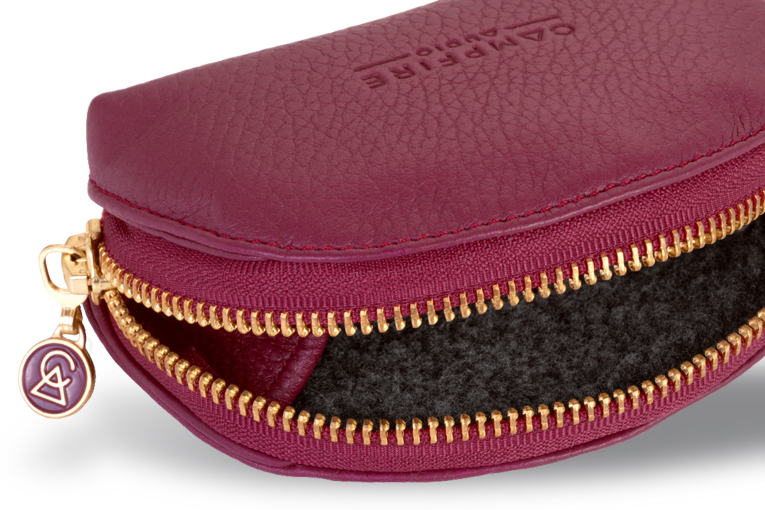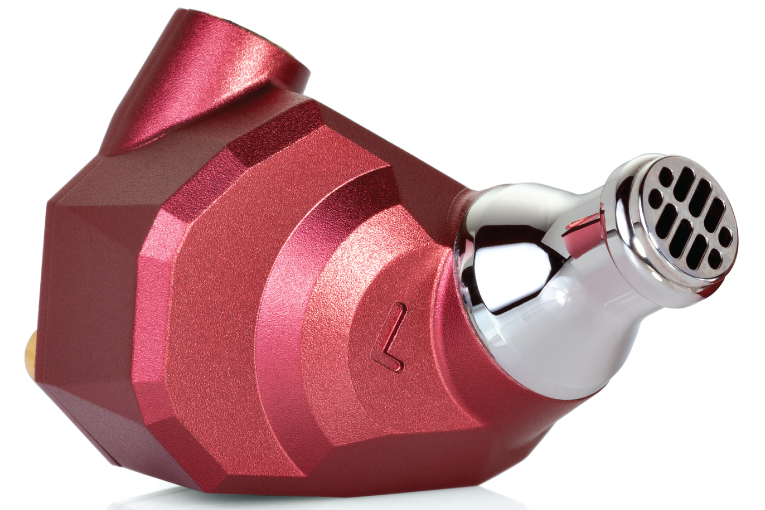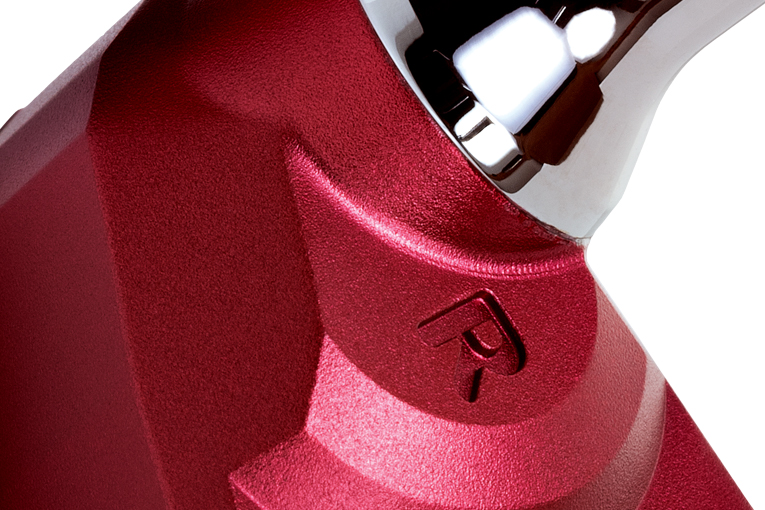Sound: 









Value: 









(Read about our ratings)
Measurements can be found by clicking this link.
It’s easy to talk about bringing manufacturing back to the U.S., but the difficulties of building cost-competitive products here often overwhelm those who try. Campfire Audio proves it is possible. Take the new Campfire IO earphones. They resemble the company’s higher-end models, and like most elite earphones, they come with a beautiful case and lots of different tips. Yet they’re made in Portland, Oregon, and they sell for just $299 USD -- not cheap for earphones, but less than people often pay for mass-market brands such as Bose and Beats.
We’ve reviewed the extremes of Campfire’s line, including the $199 Comet and the $1499 Solaris earphones, and have been impressed with the thought the company puts into the product design and tuning. The IOs stick to the usual Campfire recipe: balanced-armature drivers mounted in meticulously tuned enclosures. Of course, all earphone manufacturers tune the internal acoustics of their earphones, but Campfire seems to put more effort into it than usual.

Like most of Campfire’s higher-end models, the IOs employ a CNC-machined aluminum enclosure mated to a stainless-steel soundtube. They employ Campfire’s Tuned Acoustic Expansion Chamber, which the company says optimizes each driver’s response using a tuned chamber in front of the driver, rather than using acoustical damping material. The drivers are an extra-large balanced armature that serves as the woofer and a small balanced armature that serves as the tweeter.
Campfire president Ken Ball says that the company put more work into the IOs than it did with any other earphones, and that the new model has “enhanced vocal presence” and a “splashy energy to its musical delivery.” Let’s find out.
In the box
Before I describe what’s in the IOs’ box -- and there’s a lot -- I should do something I’ve never done before and mention how beautiful the packaging is. It looks like something that would be sold at a Papyrus store, and there’s no plastic that’ll just end up in a landfill or a pelican’s stomach.

Most important is that the IOs include ten pairs of silicone tips: Final Audio silicone tips in four sizes, generic silicone tips in three sizes, and Campfire’s own Marshmallow foam tips in three sizes. This unusually broad selection practically ensures that anyone can get a good seal (and the best possible sound) with the IOs.
The case is made in Portugal from burgundy-colored leather, and lined with synthetic wool to protect the earphones’ finish. A tiny drawstring pouch with two compartments provides further protection.

The cable is made from silver-plated copper conductors, and tipped with MMCX connectors. The package also includes a Campfire Audio lapel pin and a cleaning tool.
Use
While the crisp angles of the earpieces give the impression that wearing the IOs might be a little painful, they’re actually quite friendly to the earlobes. Neither I nor my listening panelists found them in any way uncomfortable, and they’re admirably light. The included cable has earhooks molded into it, so it sits more comfortably on the ears than the cable included with the Solaris earphones does.
I expect that the huge selection of included tips will assure a good fit for almost all listeners. Not me, unfortunately -- my ear canals are about 10% larger than average for an American male, and while the largest of the tips included with the IOs came very close, I ended up having to steal some silicone tips from the Periodic Audio Carbons to get a good seal. Fortunately, the IOs’ soundtubes are 5mm in diameter, so it’s easy to find aftermarket tips for them.

While I mostly used an iFi xDSD DAC-headphone amp as my source device with the IOs, my Samsung Galaxy S9 smartphone could easily drive the IOs to a loud level.
Sound
To me, the IOs sounded clear and natural, but with a mild tilt toward the treble. For example, in singer/pianist Sheléa’s recording of “Make Me Rainbows” (Pretty World: A Tribute to Alan & Marilyn Bergman, 320kbps Ogg Vorbis, Breath of Life / Spotify), I could hear the finger snaps and snare drum clearly, and her voice sounded exceptionally articulate although just a bit bright. I doubt anyone would describe the IOs’ bass as strong, but it’s definitely tight -- and that’s pretty much the way most audiophiles seem to like it. If there are colorations or frequency response aberrations in the IOs, they’re mild, like someone turned the bass down about 1.5dB and the treble up 1.5dB. Whether that’s a good decision depends on the taste of the listener.
We were so taken with the Campfire Audio Solarises because, to me and our panelists, they sounded entirely free of coloration, and the bass, treble, and mids were all in perfect balance. That’s why I use them as a reference for earphone testing. When I listened to “Cultural Treason” by David Chesky and Jazz in the New Harmonic (Primal Scream, 24/96 FLAC, Chesky) through the Solaris and the IO earphones, I could hear that the IOs are more lively sounding, and have a little less bass. Other than the tonal balance tilt, I heard no differences except a slightly pinched -- i.e., not airy or free-breathing -- character to the saxophone. I certainly prefer the more natural-sounding balance of the Solarises, but I expect some audiophiles and headphone enthusiasts might prefer the treblier sound of the IOs.

When I listened to country group Old Dominion’s new single “One Man Band” (320kbps Ogg Vorbis, RCA Nashville / Spotify), it seemed to me almost like the IOs were voiced to get the best sound from that one cut. The cut starts with some light picking on electric guitar (a Fender Telecaster, I gathered from the video), and the clarity of the IOs made even a subtle buzz due to a slight misfingering clearly audible. They didn’t highlight the error; they just let it come through for me to notice or ignore. The vocals sounded similarly clear, if a hair on the bright side.
I’ve been trying to figure out what the bass instrument is on “One Man Band,” and for the most part, earphones haven’t helped -- some make it sound like a booming, one-note kick drum sample played from a MIDI keypad, while others make it sound like an electric bass, but through the IOs (and other good earphones), I can hear that it’s actually a double bass, although without some of the mid and treble energy characteristic of that instrument. Maybe it’s an electric upright bass or a double bass with a pickup, but regardless, the IOs were among only a couple of earphones in my possession with bass reproduction clean and tight enough to let me make the distinction.

I did find scattered recordings on which the IOs somewhat bass-shy balance didn’t work well. Led Zeppelin’s “Black Dog” (Led Zeppelin IV, 16-bit/44.1kHz WAV, Atlantic) is one example. Despite the fact that the version I listened to is a 2012 remaster, it still doesn’t have enough bottom end in the first place, and “Black Dog” was never a particularly clear-sounding recording, but the IOs seemed to highlight its worst qualities, and it thus sounded harsh, confused, and hashy. That’s not to say the IOs don’t work for rock -- although I’d have liked a bit more bass, they sounded quite good overall when I played Deep Purple’s “Highway Star” (Machine Head, 320kbps Ogg Vorbis, Warner/Spotify), which was recorded the same year as Led Zeppelin IV under far more challenging circumstances.
Comparison
As always, I wanted to solicit some outside opinions of the IOs, so I played them for our usual listening panelists: LeRena Major, a Los Angeles saxophonist who’s held several positions in the music business and is a voting member of the National Academy of Recording Arts & Sciences, and John Higgins, who holds a master’s in music performance from USC and has served as a frequent contributor to Wirecutter and Sound & Vision.

John described the IOs’ sound much as I did. He thought the mids sounded smooth, and said the sound had “good presence with male vocals in particular,” but he wanted a little more bass and he felt that the elevated treble overemphasized the snap of some percussion instruments, particularly snare drum. LeRena -- who seemed to get a particularly good fit with the very first eartips she tried -- thought that the IOs’ bass balance sounded great with the somewhat bass-heavy R&B she often prefers, and felt that the accentuated treble gave the IOs a more enveloping and spacious sound.
Conclusion
I know from my previous work as a consultant that many manufacturers seek a “universal tuning” for their products -- i.e., they try to make all their products sound more or less the same, with the more costly ones sounding a little clearer or playing a little louder or deeper. Admirable as this may be in, say, soundbars or bookshelf speakers, I think it’s a better idea for a headphone manufacturer to offer different voicings to suit different tastes. Check out the headphone forums, and you’ll find out real fast that some people like their sound neutral, some like it trebly, and some like it bassy. The IOs have that generally smooth sound we’ve heard from other Campfire Audio models, but with a little more treble and a little less bass. If earphones known for a neutral tonal balance (such as the Campfire Solarises and Comets) don’t bring out the details enough for you, the IOs will probably be exactly what you’re looking for, without being so trebly that they add their own twist to the music.
. . . Brent Butterworth
Associated Equipment
- Sources -- Samsung Galaxy S9 smartphone, iFi xDSD DAC-headphone amp
Campfire Audio IO Earphones
Price: $299 USD.
Warranty: One year repair or replacement.
Campfire Audio
2400 SE Ankeny
Portland, OR 97214
Phone: (855) 204-1492 or (503) 853-8608
Website: www.campfireaudio.com







